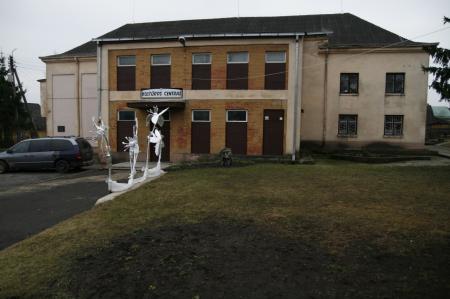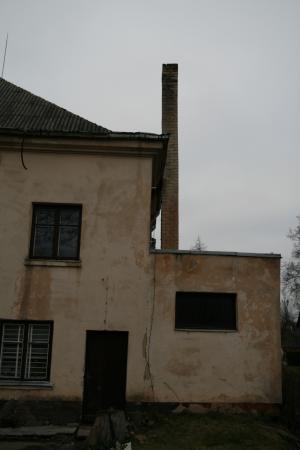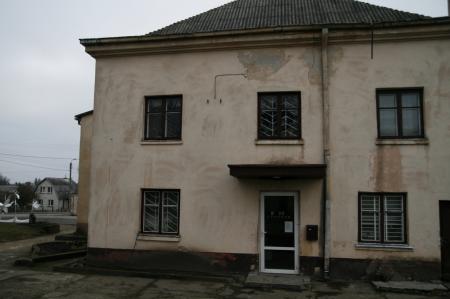Obj. ID: 8941
Jewish Architecture Beit Midrash in Ramygala, Lithuania

The former beit midrash is located in the former shulhoyf at the Krekenava–Vadokliai road that crosses Ramygala from east to west. The Church of St. John the Baptist is located some 100 m northwest of the shulhoyf, and the town square lies at a similar distance to the west. The Upytė River flows 200 m from the former beit midrash. The site of the shulhoyf has been transformed beyond recognition and is an open space today.
The beit midrash was supposedly built in the late 19th – early 20th century, but no pre-WWII depictions of it are known. After the war, the former beit midrash was rebuilt into a palace of culture and was extended westwards; new annexes were attached to its eastern, northern, and southern façades.
In 2006 it was a plastered brick building covered with a hipped roof of asbestos sheets. Traces of the original building, including lesenes and an outline of a semicircular window of the prayer hall, are preserved on the southern façade. Similar lesenes are found on the northern, street façade, and remnants of such lesenes divide the eastern façade into four bays. Most probably, the difference in the height between the eastern and western parts of the southern façade reflects the original division of the building into a prayer hall on the east and the women’s section on the west.
A plaque on the northern façade indicates that this was a Jewish prayer house.





















